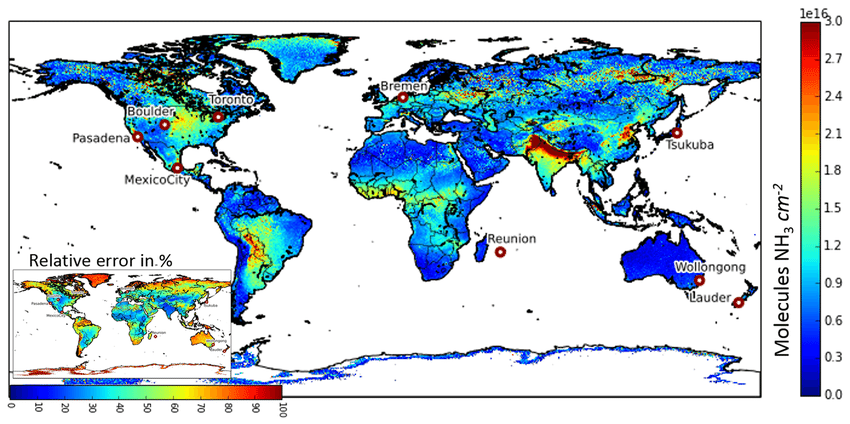Ammonia is the only alkaline gas in the atmosphere. It is one of the key features to control the acidity of aerosols and the formation of ammonium salts.
In the environment of $NH_3$-rich and $NH_3$-poor, the formation pathway of the secondary aerosol would be distinct.
For example, if $NH_3$ is redundant after the combination with $_2SO_4$, they would continue to react with $HNO_3$ to form $NH_4NO_3$. However, if in the $NH_3$-poor environment, $HNO_3$ would react with the crustal material and thus form nitrate in the coarse mode.
In this way, the concentration levels of $NH_3$ affect the chemical composition, size distribution of atmospheric aerosols.
However, the ground-level monitoring of $NH_3$ is still limited in China with several published ones in limited spots.
Therefore, I want to learn that:
- Is there any method to estimate NH3 concentration by other species?
- Is there any dataset (e.g. remote sensing, measurements) offering the distribution of $NH_3$ concentration?
